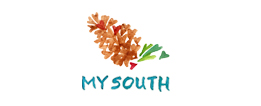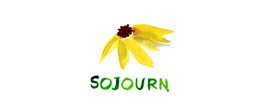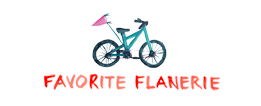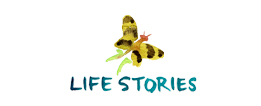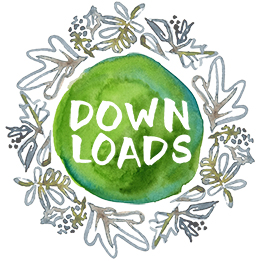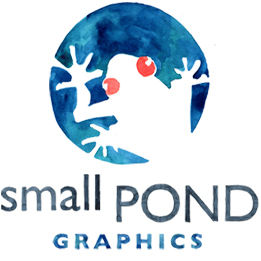I think I’ve mentioned my instigator friend, #17. He’s actually an old friend (don’t take that personally, #17) who claims to be a recent and avid EyeJunkie convert. I call him an instigator because he sometimes sends me links or questions or book recommendations to stir the Junkie pot a little, prompting me to express myself on various issues or ideas, and perhaps inspiring me to some essay eloquence. Right.
It happened this morning. Again.
Like many across our country (and indeed our planet), I’ve been watching news of the oil “spill” in the Gulf of Mexico over the past six weeks. The story is of particular interest to those, who like me, live in Mississippi and other Gulf states. But, the implications environmentally and economically are so much more far-reaching. Anyone who is awake is certainly convinced of that. Right? When I heard of the proposed “top kill” option to stem the flow of oil into the Gulf, my first thought was, “This whole process is an exercise in experimentation with 210,000 gallons of oil gushing daily.” It’s a frightening concept to realize you are reaching the limit of your own capacity to redeem a situation.
Enter #17.
This morning he called my attention to an article from the New York Times about the affect the “spill” is having on Louisiana shrimpers and fishermen. The implications of this disaster on their way of life and livelihood are unmistakeable, including the larger questions of whether shrimp from the Gulf will ever be safe to eat. The plot thickens on the impact of the explosion at Deepwater Horizon. #17 wondered aloud in cyberspace why the disaster is still being called a “spill” rather than a “crime scene.” Good question. But a crime against what? Against whom? Then, of course, #17 took the probe one step further.
“WWJD?”
For the unindoctrinated, that means “What would Jesus do?” Yep. Once an instigator, always an instigator. The ensuing dialogue in pursuit of an answer to that question made me think. It made me sad. It made me wonder. It made me ask more questions. With #17’s permission, I thought I’d share it here with little editing…
Junkie: And what’s YOUR take on what Jesus would do?
#17: Maybe He would cry. Why don’t YOU lead me to water on this?
Junkie: I don’t know about leading to water, but random thoughts…
I do think God is grieved by it. I believe a few facts about God that color the situation.
I think God made this earth. I think He designed it to be a living and continual testament to Himself and His existence. I also think He made it to sustain itself in many ways, but also to need a caretaker. The first few chapters of the Bible indicate that God designated man to be that caretaker. I think God designated man as the culmination of His creation — therefore not equivalent to nature, but more important than nature. In many ways, He designed the “system” or nature to serve man. That’s not necessarily a popular opinion with environmental groups.
In those first few chapters of Genesis, there is the account of man in the garden of Eden. Some see it as figurative, some as a recount of history. To me, the concepts are the same regardless. In that story, it was God who killed the first animals to provide clothing for man after his “fall.” The environment was used to serve the needs of man.
So, there’s a fine line with this situation. I think it’s ok for man to explore, ok to tap and use the resources we have available on this planet. However, God entreated man to be the caretaker. So there is an inherent responsibility of stewardship. I think that’s where we fall short. I think that’s where greed takes over. I think that’s where we show our lack of restraint. That lack of restraint and balance is what so often leads us into disaster.
But, above all, I believe God is compassionate. He gave souls to men, not to plants or animals. In this situation, I think he still sees the people as more important than the damage. I’m also aware that the two aren’t easily separated.
What would Jesus do?
I don’t know. I think He would have men act with compassion. I think He would want us all to take responsibility for our own actions, to own them. I think He would want sincerity in motives and actions. I think He wants the extra mile, the giving of the shirt as well as the coat, the recognition of what is priceless. I think He wants this mess cleaned up.
I like the idea of the Gumbo parties. [Gumbo for the Gulf is the benefit brain child of Environment Michigan.] Go out and buy shrimp. Eat it and give. But, is a halt to all drilling the answer? I don’t know.
I know that for many counties in Mississippi and Louisiana, the best job opportunities for feeding families are found in offshore drilling (and ironically in fishing or aquaculture). With the limited educational opportunities and historic poverty, those jobs are essential in many ways. In Mississippi, forestry is one of the largest industries (if not the largest) — another target of the environmental lobby. The current crisis is in need of funds and so are the shrimpers and other fishermen. But what about long term? What economic development can be produced to replace the jobs lost with a halt to all drilling?
And, the reality is that most goods are delivered by freight across this country. A reduction in the amount of available oil (regardless of its source) means double or triple prices on basic needs. I can’t afford that again.
There are many positions here. And not many easy answers. For me, I think the best answer lies in balance and restraint. For regulations and limits to be real. For incentives for alternative fuel to be real and enticing. For disincentives to breeching the limits to be real and detrimental.
#17: I agree completely.
I appreciate the narrative about the scripture. I also see nature as something in service to man. So did the Romans. So did the American Indians. Have you read Wendell Berry? On Stewardship? [more instigation]
I also believe in moderation and compassion. I believe in restraint and delicacy. That’s why I re-read books, why I wear my clothes out, why I have ridden a bike for so long. Its why I took the bus in Cincinnati. Its why I took the train home in Mississippi. That’s why I buy $25 of gas at a time, why I eat leftovers and pack a lunch. Its why I put new lenses in old frames and why I’m careful about how often I wash clothes.
I also believe Jesus would be grieving. And so do many others at a distance from this crisis. We feel helpless.
Junkie: Everyone feels helpless. And, we ARE in many ways.
Presumably the best and brightest minds from the private and public sectors are applying solutions to this problem to no avail. That’s not an easy thing for man to accept. And, it’s not an easy thing to look in the mirror as a race or a people after having created such a far-reaching dilemma. It’s not easy to admit that we had no foresight, or at least inadequate foresight. It’s like the realization after Hiroshima — what have we done? What genie is now out of the bottle?
Bringing it back to the real people, I think what bothers me the most is the rush to embrace agendas. It’s human nature and politics, but it’s taking our eyes off the ball. Party lines, Obama bashing, big oil bashing. The rhetoric has a place, but it is in the back seat. I was disappointed most, I think, to see the immediate adversarial relationship established by the EPA representatives upon their arrival two weeks after the explosion. In reading the tenor of the press conferences since, it put BP in an immediate defensive position. Of course, they’re going to be the fall guy. They are going to be the culprit. That’s obvious. But, that was a mistake in crisis management. To establish advocacy and an environment of cooperation fosters the best ideas. It squelches the need for secrecy and hedging. I think that approach was politically motivated, and it offended me as a citizen of a state that is likely to be affected directly by this disaster for decades. And, to see a Congressman holding up a glass filled with dark liquid that could just as easily have been 3-day old coffee was just ridiculous posturing.
You know, I’m seeing articles where the concept of “risk management” and its viability are coming into question. The assumption is that BP (or any of the oil companies) may have imagined this scenario in some brainstorming session somewhere in the past, but it was likely not even addressed because the possibility was so remote. Now, the remotest possibility has created a situation where a hazmat suit is required to walk in the Louisiana marshes that feed the lowest elements on the food chain — for wildlife and humans. “Managing” risk is an exercise in choosing, in setting priorities. Unfortunately, the priorities provided by probability (and certainly by financial gain) are being shown NOT to match up with the potential consequences. The horror is that just as we can’t conceive of an appropriate solution to this problem we’ve caused, we also can’t conceive of the true impact. For all our smarts, our brains simply aren’t big enough to accurately predict that.
Dialogue is important. Sadly, it’s not always the product of this small world we live in. It’s not always the norm for friends living 17 states apart or issues entrenched an ocean apart. But, I think maybe that dialogue is our greatest hope for solutions.
From there OUR dialogue moved into less weightier topics and pleasantries, punctuated by something like…
Junkie: What were you thinking getting me started with both Jesus AND British Petroleum at the same time?
#17: A *smirk* I could read loud and clear across 17 states.











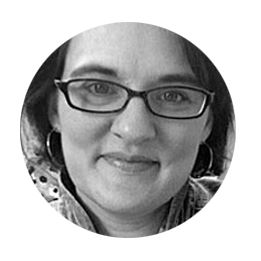 Hello & welcome! I’m Haley Montgomery, and I’m the designer and owner of
Hello & welcome! I’m Haley Montgomery, and I’m the designer and owner of 